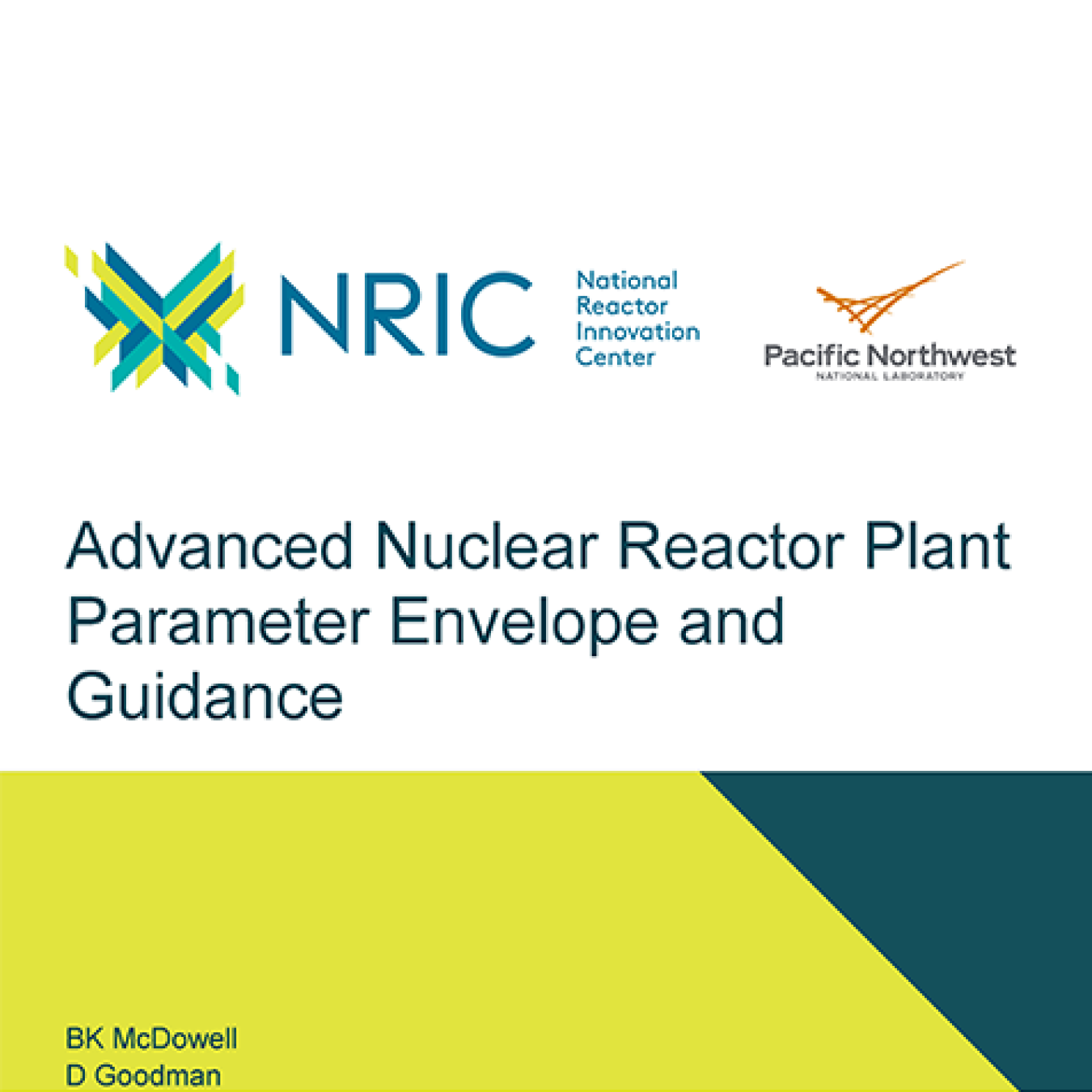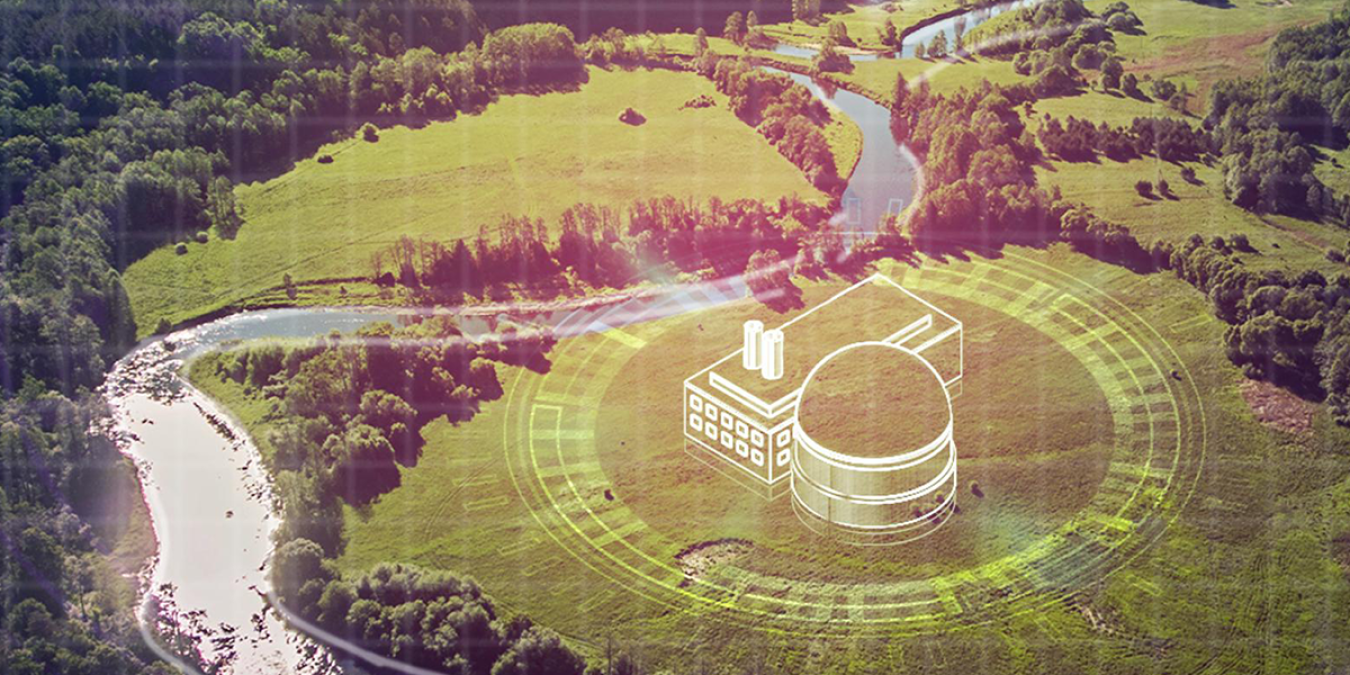https://www.energy.gov/ne/articles/...ster-approach-demonstrating-advanced-reactors
Office of Nuclear Energy
DOE Report Highlights Faster Approach to Demonstrating Advanced Reactors
May 4, 2021
- Office of Nuclear Energy
- DOE Report Highlights Faster Approach to Demonstrating Advanced Reactors
PNNL
Pacific Northwest National Laboratory (PNNL) and the National Reactor Innovation Center (NRIC) released a report on a new approach that could lead to faster demonstrations of advanced reactor projects supported by the U.S. Department of Energy. The new analysis could cut more than a year off of the environmental review process—potentially saving millions in tax dollars and regulatory costs.
Advancing the Permitting Review Process
The new report, Advanced Nuclear Reactor Plant Parameter Envelope Guidance, provides plant parameter envelopes (PPEs) developed for microreactors and small-to-medium-sized advanced reactors. The PPEs and associated guidance can be used to help generically satisfy certain National Environmental Policy Act (NEPA) requirements. It is a modified version of a process used by the U.S. Nuclear Regulatory Commission for early site permits, including for small modular reactors at the Clinch River site in Tennessee.
The PNNL research team examined a wide range of potential advanced reactor concepts and footprints to create the PPEs. They explored various design attributes such as the physical size, construction methods, coolants used, power output, and fuel types to develop a “surrogate” reactor that could be analyzed as a bounding case in a NEPA review.
“The PPE approach will allow NRIC and our stakeholders to evaluate environmental impacts at a potential site before the reactor design is chosen,” said Ashley Finan, the director of NRIC. “Establishing the environmental boundaries in advance—while the reactor technology, blueprints, and sites still are being determined—will result in considerable savings to industry and taxpayers, and will allow advanced reactor deployment to stay on pace to meet the world’s clean energy goals while safeguarding our environment.”
Long Road to Demonstration

Advanced Nuclear Reactor Plant Parameter Envelope and Guidance report
Before a reactor can be built, the proposed design must undergo a regulatory process that typically takes three to six years to complete. The portion of the reactor review that focuses on the environmental analysis for the siting and construction can take from two to four years.
“When you’re looking at more than two years to do an environmental analysis for each proposed project, costs can add up,” said Bruce McDowell, PNNL senior advisor and the study’s co-author. “There is a need for innovation in terms of the technology as well as the regulatory process for siting and construction.”
The adapted PPE approach, developed by PNNL, is expected to cut more than a year off of this timeline by making subsequent project-level environmental review processes more efficient—allowing for faster demonstrations to take place. By incorporating the PPE into a programmatic EIS at one or more DOE sites, subsequent project-level NEPA analyses would be able to tier to the programmatic EIS and may be able to develop Supplemental EISs rather than full new project-specific Environmental Impact Statements. This approach simplifies the process and could cut environmental review times down to between six and 24 months.
“As the PPE report concepts are analyzed as a surrogate reactor at one or more DOE sites, we believe that this will lead to better applications and faster, more consistent project-level environmental reviews,” said Dave Goodman, co-author of the study and an environmental planning research analyst at PNNL.
The U.S. Department of Energy recently established the Advanced Reactor Demonstration Program to help demonstrate a variety of advanced reactor designs that play a key role in helping to fight climate change, create new U.S. jobs and position the United States as a leader in advanced carbon-free technology. Under the program, two reactors are expected to be operational within the next seven years and several more are working toward lowering the risk of their promising U.S. technologies.
NRIC, a multi-national lab effort led by Idaho National Laboratory, provides advanced reactor innovators with the resources and infrastructure to test, demonstrate and evaluate the performance of advanced reactor concepts. Bringing them to market sooner will require a more project-specific process that can efficiently adjust to the different characteristics of each design.
Learn more about NRIC and its role in helping to demonstrate and deploy advanced reactors HERE.
- Forums
- ASX - By Stock
- Nuclear Power Related Media Thread
https://www.energy.gov/ne/articles/doe-report-highlights-faster-a...
-
- There are more pages in this discussion • 4,097 more messages in this thread...
You’re viewing a single post only. To view the entire thread just sign in or Join Now (FREE)
Featured News
Add SLX (ASX) to my watchlist
 (20min delay) (20min delay)
|
|||||
|
Last
$5.33 |
Change
0.260(5.13%) |
Mkt cap ! $1.262B | |||
| Open | High | Low | Value | Volume |
| $5.12 | $5.33 | $5.01 | $4.811M | 914.2K |
Buyers (Bids)
| No. | Vol. | Price($) |
|---|---|---|
| 1 | 336 | $5.29 |
Sellers (Offers)
| Price($) | Vol. | No. |
|---|---|---|
| $5.34 | 1698 | 1 |
View Market Depth
| No. | Vol. | Price($) |
|---|---|---|
| 1 | 1500 | 5.170 |
| 1 | 2000 | 5.030 |
| 1 | 200 | 5.010 |
| 2 | 13000 | 5.000 |
| 1 | 1904 | 4.980 |
| Price($) | Vol. | No. |
|---|---|---|
| 5.500 | 368 | 1 |
| 5.550 | 350 | 1 |
| 5.600 | 3209 | 3 |
| 5.650 | 2625 | 1 |
| 5.840 | 3092 | 1 |
| Last trade - 16.10pm 28/06/2024 (20 minute delay) ? |
Featured News
| SLX (ASX) Chart |
The Watchlist
LU7
LITHIUM UNIVERSE LIMITED
Alex Hanly, CEO
Alex Hanly
CEO
SPONSORED BY The Market Online











